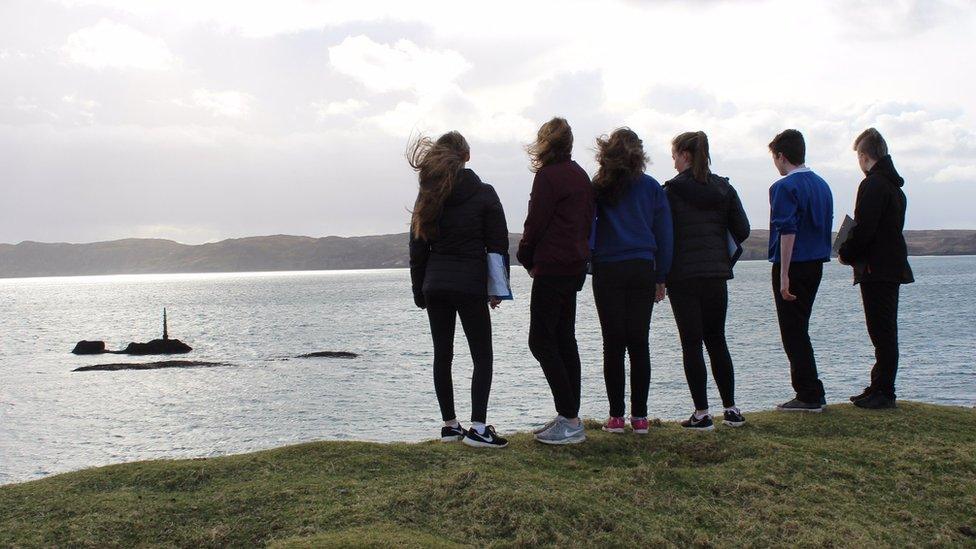Preparations begin for Iolaire Disaster commemorative events
- Published

School pupils for Stornoway's The Nicolson Institute look to the site of the Iolaire Disaster
Preparations have begun for events marking the centenary of the Western Isles' Iolaire Disaster.
The yacht Iolaire was wrecked on a reef called the Beasts of Holm just off the Isle of Lewis in the early hours of 1 January 1919.
The ship was carrying home hundreds of sailors following the end of World War One. Of the 280 on board, 205 died.
The Stornoway Amenity Trust has received £8,000 of lottery funding for a project recalling the tragedy.
The Iolaire Memorial Project will focus on commemorating the disater in the run up to the centenary of the disaster in 2019.
Islanders are to be asked for their memories of those who were involved in World War One.
'Their ancestry'
The project will work in close partnership with school pupils and staff at The Nicolson Institute in Stornoway, on Lewis, and Stornoway Historical Society, as well as other local history organisations.
A film and a ceremony for the opening of a permanent memorial in Carn Gardens, Stornoway, also form parts of the project.
Tony Robson, of the Stornoway Amenity Trust, said: "The Stornoway Amenity Trust is delighted to be working closely with pupils from The Nicolson Institute and to offer the opportunity for pupils to learn more about the Iolaire Disaster and contribute significantly to the commemoration of an event that is rooted in their local history and, in some cases, their ancestry."
Western Isles Council - Comhairle nan Eilean - is also involved in organising commemorative events.
Councillor Norman A MacDonald said: "The impact of the Iolaire tragedy was felt in our communities throughout the islands and is recognised as being hugely significant in the context of the WWI commemorations."
Most of those killed were from the islands of Lewis and Harris.
The last survivor of the Iolaire - which means "eagle" in Gaelic - died in 1992.
The yacht set sail from Kyle of Lochalsh on the west Highlands mainland on New Year's Eve 1918.
Weighed down
Making its final approach into Stornoway harbour on a dark night and in a strong gale, it changed course at the wrong point.
With the lights of the harbour in sight, the ship struck rocks at full speed and immediately began to tilt, filling up with water.
Although the stern of the boat was at one point just six metres (20ft) from land, many of the men onboard were weighed down by their heavy uniforms and were unable to swim ashore.
The next morning the bodies that had been recovered or washed up were laid out for families to identify.
The cause of the disaster was never conclusively determined. A public inquiry was unable to establish the reasons for the accident.